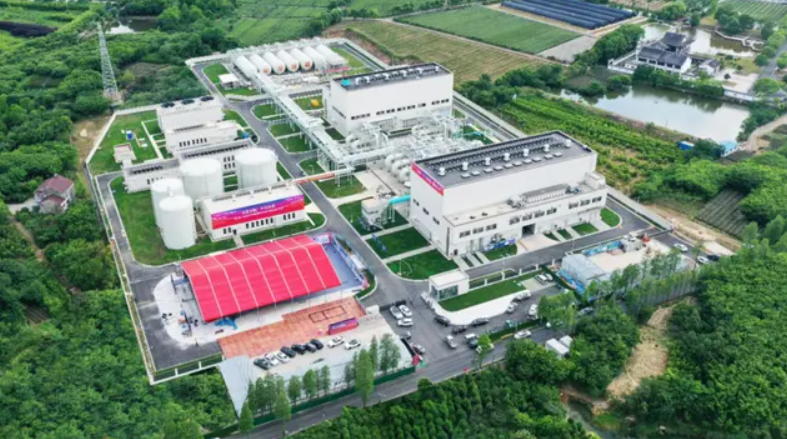
China advances in clean energy with giant 350 MW CAES project, capable of storing 1.2 million m³ and leading global innovation
Chinese group Huaneng has reached a new milestone in energy storage with the launch of the second phase of the Compressed Air Salt Cave Energy Storage (CAES) project in Jintan, Changzhou city, Jiangsu province.
Destined to become the largest CAES facility in the world, this innovative project integrates cutting-edge technologies to increase power, storage capacity and efficiency, setting a standard for sustainable energy solutions.
Global technological framework
Li Yaoqiang, chairman of China Salt Group, said the project is the first industrial-grade project in the world for clean energy storage by compressed air and represents an important milestone in the use of salt caverns to explore the development of the salt industry in China. .
Revolutionary scale and capacity
The second phase of the project will feature two 350 MW CAES units, without the need for supplementary fuel, with a combined storage capacity of 1.2 million cubic meters. This will allow it to store up to 2.8 GWh of electricity per full charge, surpassing any other CAES installation in the world.
Designed to operate at 330 charge and discharge cycles per year, the project outperforms existing technologies in power generation per unit and overall system efficiency.
The first phase, now completed, installed a 60 MW unit that provided crucial operational insights for the expansion in the second phase.
The installation incorporates revolutionary technology without supplemental fuel, eliminating the need for external energy sources by storing and reusing heat generated during air compression. This method achieves zero carbon emissions and energy conversion efficiency of over 60%.
Technological innovation
The Jintan project stands out for advanced system optimizations, including simplified process flows and improved equipment configurations. Among the technological highlights are:
- One-click boot system: Reduces boot time from 20 to just 5 minutes.
- Greater machine efficiency: A 0.5% increase in efficiency improves overall performance.
- Quick response: Quick-start air turbines ensure grid stability during peak operations.
Step towards a greener future
These advancements not only increase reliability, but also position the facility as a model for future CAES projects around the world.
The Jintan project exemplifies the potential of CAES technology to contribute to a low-carbon energy grid. By leveraging existing salt caverns and integrating innovative designs, the project offers a sustainable solution for intermittency of renewable energy sources.
As the facility moves into the next phase, it consolidates China’s leadership in energy storage and provides a scalable model for global adoption. Combining efficiency, reliability and environmental sustainability, the Jintan CAES project is destined to play a crucial role in shaping the future of clean energy storage.
Global impact of CAES
CAES systems are gaining traction worldwide, with companies in countries such as Australia and the United Kingdom advancing into the planning and construction stages of CAES plants to diversify their energy storage needs.
From the use of natural salt caves to the implementation of pioneering technologies, the Huaneng group’s Jintan project demonstrates the transformative potential of CAES systems. As the world seeks sustainable and efficient energy solutions, projects like Jintan are paving the way for greener energy infrastructure.
With information from Interesting Engineering*
Source: https://www.ocafezinho.com/2024/12/26/china-transforma-cavernas-em-potencia-de-energia-sustentavel/

